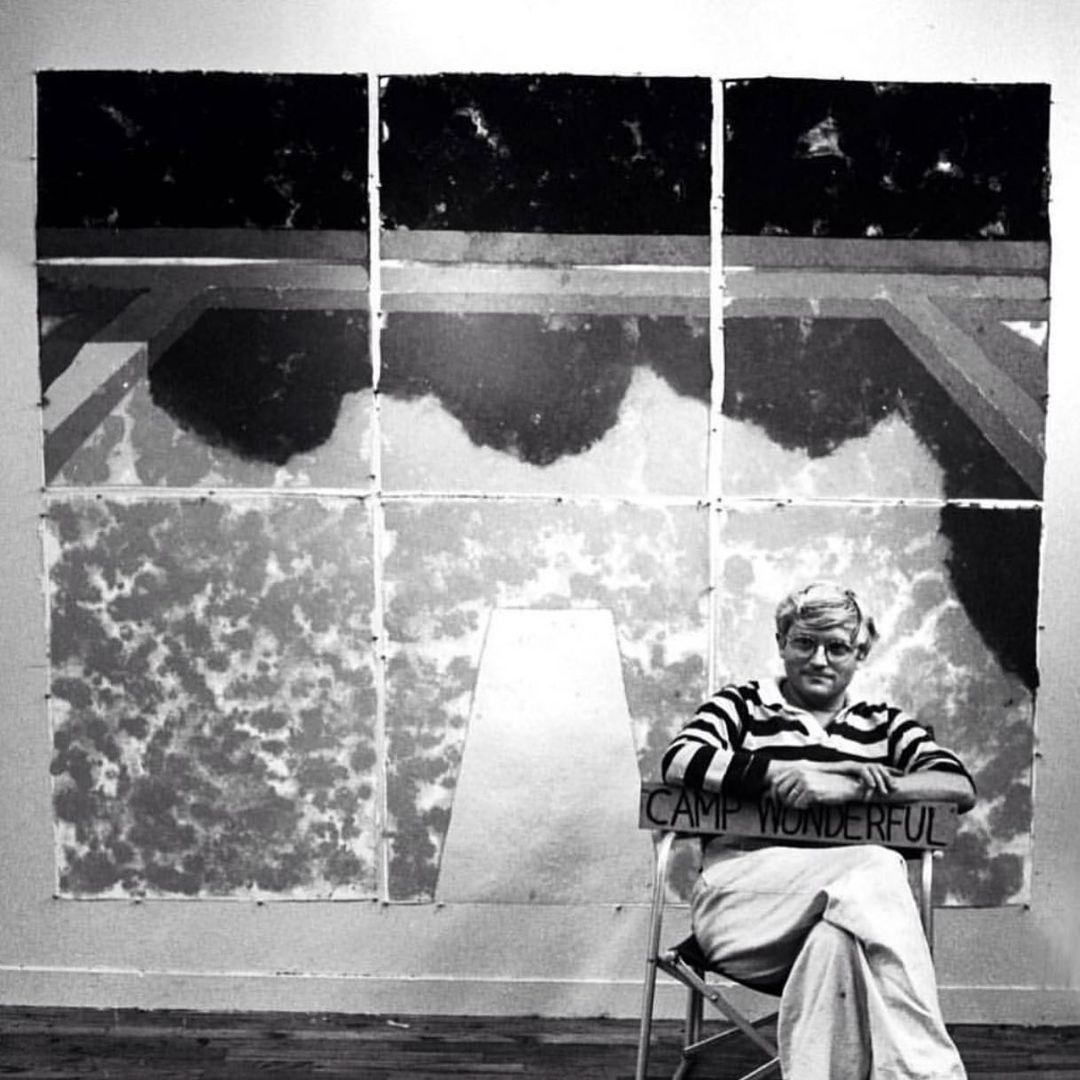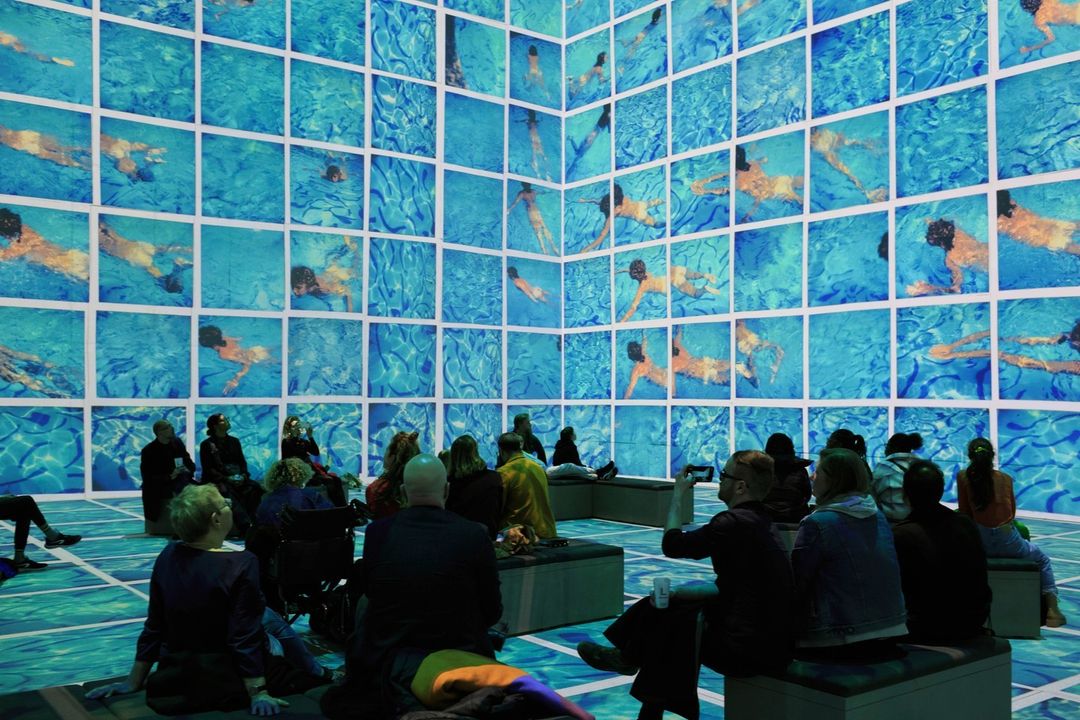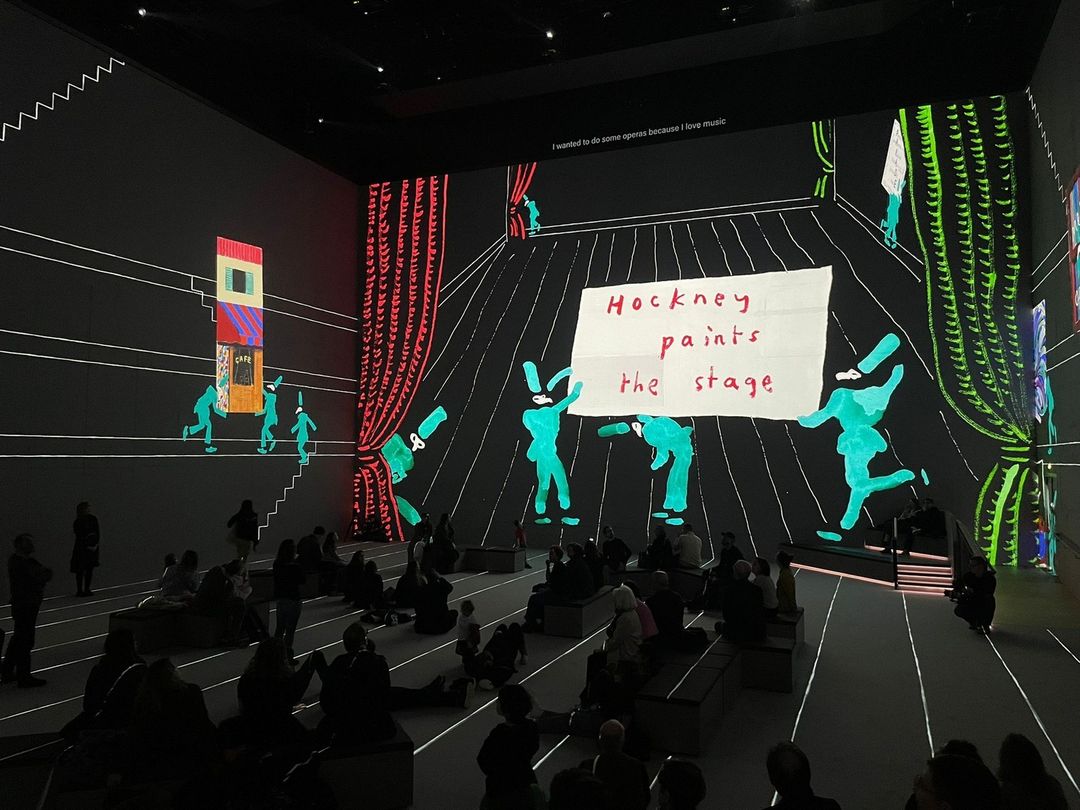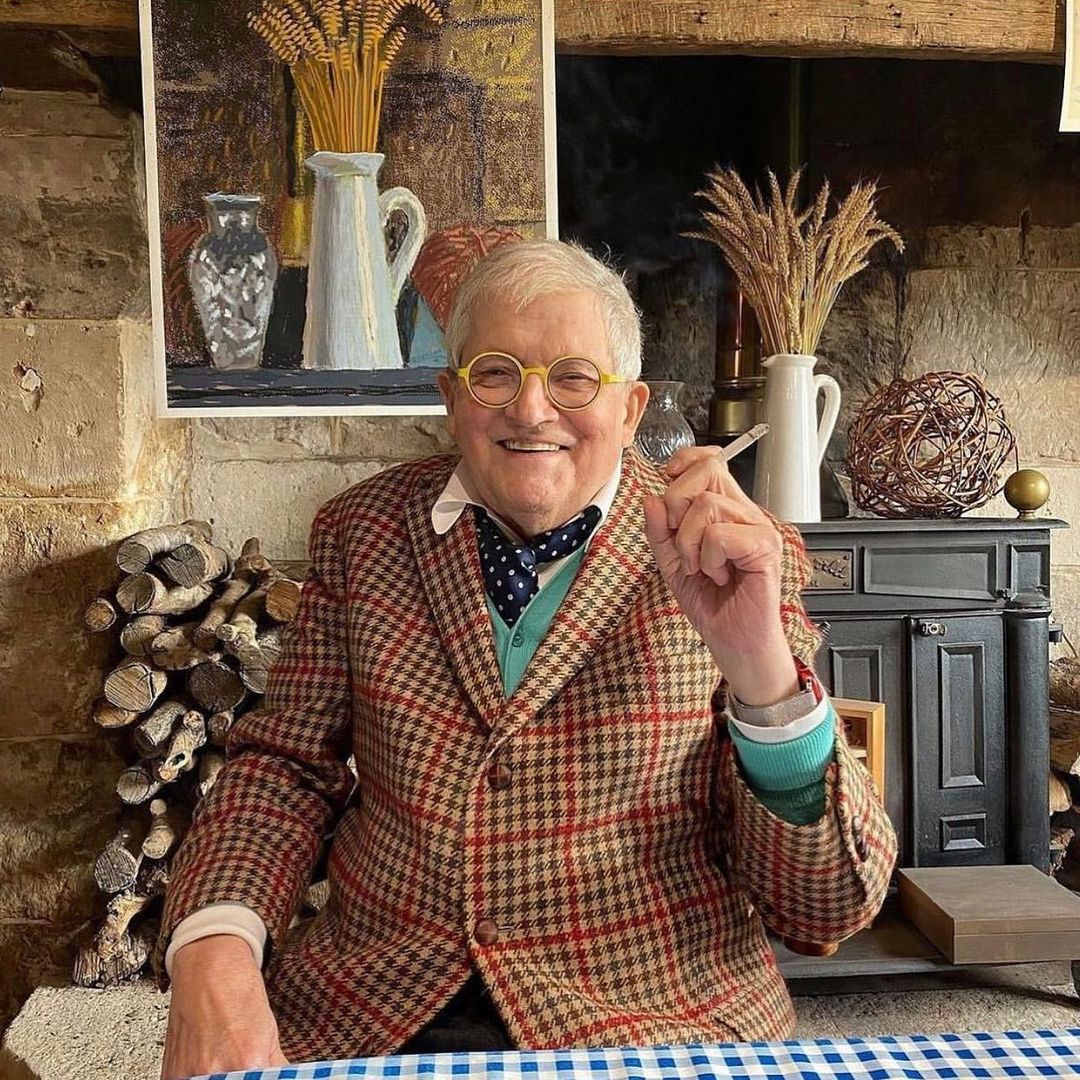“Bigger & Closer” takes viewers inside the English painter’s artworks and chronicles his six-decade career through mesmerizing digital projections.
Yorkshire-born artist David Hockney made a name for himself in the 1960s and 1970s with his vibrant and sophisticated acrylic paintings of Californian life—which consisted of subjects like glamorous socialites in modern homes and nude sunbathers lying next to glittering swimming pools.
READ ALSO: Well-Deserved: Cannes 2023 Names Ruben Östlund As Jury President For 76th Film Festival


Recently, the 85-year-old painter just opened his latest exhibition entitled David Hockney: Bigger & Closer, which will be running until June 4 at Lightroom, a new arts venue in London. The roughly hour-long show features a collection of works created throughout Hockney’s 60-year career—composed of well-known pieces, rarer ones, and paintings created specifically for the exhibit.

However, rather than displaying traditional and physical paintings, Bigger & Closer made use of expansive and immersive projections. The ceilings, walls, and floors of Lightroom are bathed in colorful swathes of light that transport viewers into his work.
There are even animated projections, so audiences can see the artist’s every brushstroke unfold before their eyes. The exhibition’s pieces are accompanied by music created by American composer Nico Muhly, as well as audio commentary from Hockney himself.
Creative Collaboration
Bigger & Closer was a product of Hockney’s joint effort with Nicholas Hytner’s London Theatre Company and 59 Productions, and took more than three years to make. Mark Grimmer—the director of 59 Productions—worked closely with the English artist throughout the process and equipped him with innovative tools to create the show’s memorable digital effects.
While Grimmer told the New York Times that he was initially nervous about pitching the exhibit idea to Hockney through email, the artist responded quickly and enthusiastically. This isn’t particularly surprising, given Hockney’s long-standing fascination with technology and its creative potential.
According to the New York Times, the artist was already incorporating Polaroid cameras into his process during the 1980s, showcasing photos that he took by arranging them into collages. After that, he experimented with fax machines and photocopiers. Even at an old age, Hockney has been using his iPad to create stunning digital paintings over the past 10 years.
Something Different
Some critics aren’t too fond of immersive art, since they see it as nothing more than fodder for “sensuous” social media selfies—something that they believe prevents people from genuinely engaging with works. This particular viewpoint arose with the popularity of other projection-based exhibitions on late artists like Gustav Klimt, Vincent Van Gogh, and Salvador Dalí.
However, Hockney’s exhibition is meant to be something entirely different. In an interview, Grimmer stated that he wanted the show to be “more about storytelling than simple spectacle.” Hockney adds: “They’re [referring to late and famous artists] dead. I’m a living artist, so I’ve come in and actually done things.”

Plus, something that critics fail to recognize is how such digital shows increase the accessibility of art by introducing it to a wider audience. “It pulls a six-decade career into the present and future and, because it requires no museum loans, could easily travel or run in multiple locations simultaneously,” Vogue wrote in a recent article on Bigger & Closer.
Luckily, it seems like the three years of hard work paid off. Although some critics believe that Hockney’s exhibition fails to capture the full beauty of his art, other viewers praise it for reinvigorating his work.

The same Vogue article added: “The six chapters of Bigger & Closer range from the art historical to the hallucinatory, making even Hockney’s most familiar work feel new.”
This is exactly what the English artist hoped to achieve with his latest show. “I wanted to see the paintings new, and I think that’s what I’ve done,” stated Hockney in an interview before the exhibit’s unveiling. He also hopes that the exhibition will “inspire other artists” to experiment with new mediums and technology.

“I’m 85 years old, so I don’t know how much longer I have. But some young person might see something here and think, well, I can see what you could do with this. I hope what it will do is give young people some ideas,” he told The Guardian.
As for the negative reviews, Hockney remains blissfully unperturbed and comfortable with his creative decisions. “I don’t care what critics say about me. I think it’s really good, and if I think it is, that’s all that counts,” he shared with The New York Times.
Banner Photo by Justin Sutcliffe via Instagram @_lightroomldn.





